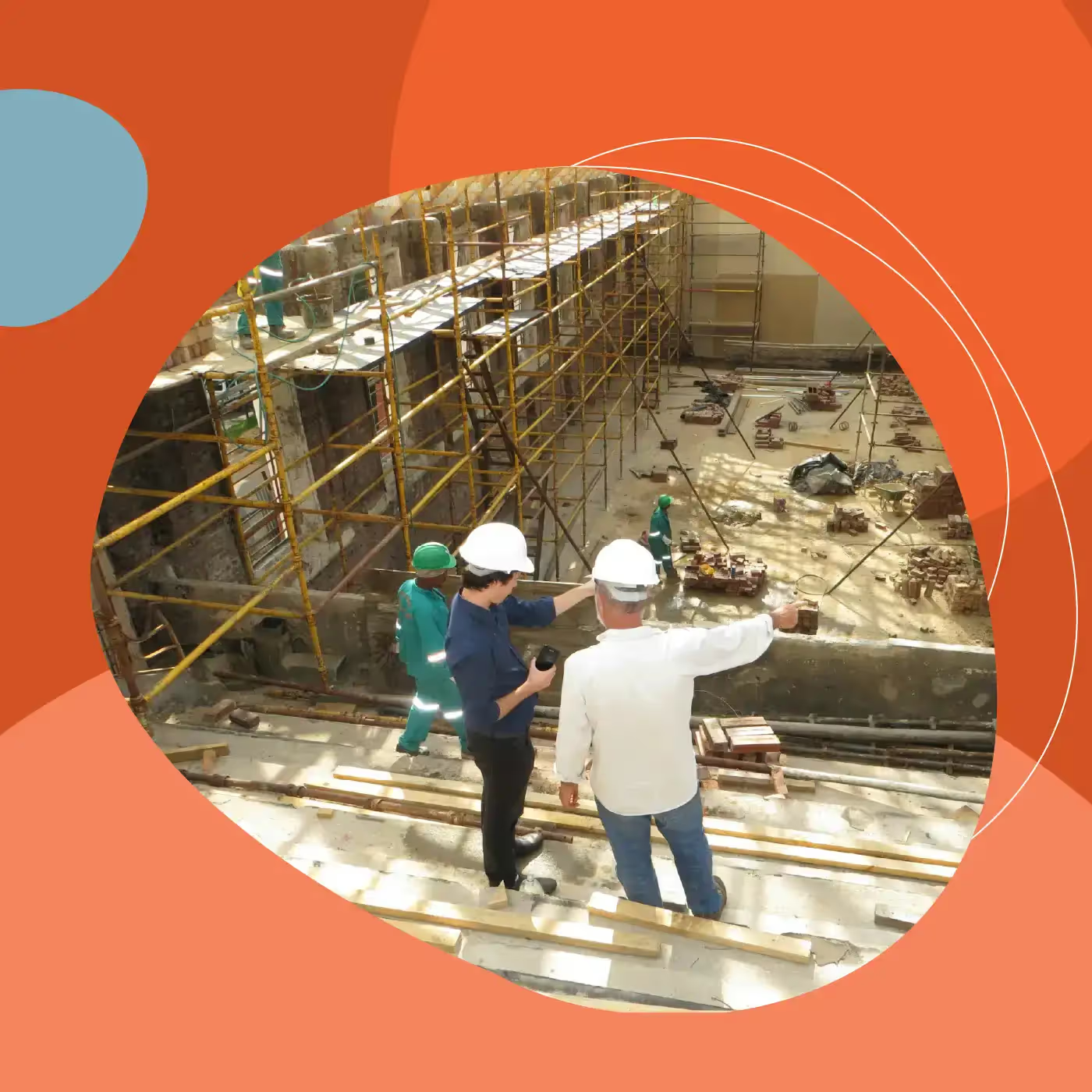7 Website Structure Adjustments You Can Make for Better SEO
7 Website Structure Adjustments You Can Make for Better SEO

In this digital age, your website should be a priority for your business. If you’re trying to make sure people see your website, you need to think about search engine optimization (SEO). When it comes to tactics for better SEO, the strategies that deal with website structure are some of the most effective.
It’s a similar practice to business process management (BPM). You need to think holistically. You can’t just consider SEO in terms of content and keywords, you also need to think about how your website looks and functions.
It’s all down to how search engines rank websites. Specialized software bots “crawl” through the internet, scanning sites, and jumping from page to page using the hyperlinks on those pages. However, they prefer pages where they can find these links quickly. So, just as potential customers dislike a website that is slow to load and difficult to navigate, so do search engine bots, and will lead to a lower search engine ranking.
It can be tough juggling these different factors - aesthetics, usability, and SEO - at the same time. Luckily, we have seven suggestions of smart ways to adjust your web structure for better SEO.
1. Combine your website structure with keyword research
Even if you’re not looking to change your website, it’s a good idea to do some level of keyword research. Having a large list of the search terms used to find your website allows you to adjust your content for SEO, but if you want to take it further, you can use it to adjust your website structure, too.
First, you’ll need to have completed that keyword research we mentioned. Then, you’ll want to begin categorizing the keywords. These categories should be groups of keywords that share a meaning (or in the case of key phrases) of particular words.
Manual organization of keywords can take time. A spreadsheet is usually the best solution for keyword categorization, so if you have a large website you may want to consider automation for Excel to help with grouping keywords together.
Once you have your categories ready, begin to integrate them into your website structure. Say you run a bakery, and you want to target a group of high-volume, high relevant keywords relating to bread. Consider altering your website structure to include a category page that links all the individual product pages for your bread together. This page will hopefully rank high on search results, which will then generate more traffic to your website.
2. Use internal linking
The idea of a “category page” that we mentioned in the previous section is an example of internal linking, which is a vital part of focusing your website structure towards SEO. Internal linking means having lots of links on your website that link to other pages within your website.
This is a good structural move as it allows easy movement between the different pages on your website, but more importantly, it has a huge impact on search engine rankings. Internal linking improves SEO as it transfers what’s commonly known as “link energy” or “link authority” between pages. Linking a well-ranked page to two or three smaller pages will share this energy, increasing the SEO of the smaller pages at no cost to the well-ranked page.
As well as improving SEO, smart use of internal linking is also a great way to max out conversions: your internal links can act as calls to action and send website visitors to sales or contact pages, which can turn casual visitors into paying customers.
3. Rethink your website architecture
Your website architecture refers to the overall structure of your website. The main choice you are faced with is picking between “deep” or “flat” architecture.
Deep website architecture means that some pages can only be found by following a chain of links from other pages. For example, you’ll have your homepage, which links to a small number of other pages, which each link to another couple of pages, and so on. This means it’s time-consuming to get to the page you want, as you must hop from page to page until you get to your final destination.
If your website has deep architecture, the deeper pages may struggle to get traffic, and will likely have a low search ranking. For better SEO, you’ll want to adjust to “flat” architecture.
Flat website architecture means that your homepage links to a series of category pages, which then link to standalone pages like product pages. You may also need a second set of category pages, depending on the size of your website, but the point is that users can very quickly get from the homepage to any other page on your website.
Flat architecture is better for SEO because the specialized bots that search engines use to crawl through pages move like human visitors would on your site. A human visitor would lose interest in clicking on endless links. Similarly, bots will have an easier time ranking and indexing your web pages if the pages aren’t buried behind a long series of other pages.
4. Consider the crawl efficiency of your website structure
An important part of SEO is making sure the bots software that Google uses has an easy time indexing your website. So, you need to consider the “crawl efficiency” of your website, which is simply the ease with which the bots can crawl through the website.
This is only really a concern if your website is very large. For the most part, the bots that Google (and other search engines) use can travel through a website and index each page very quickly.
However, if you do have a large website, you will need to consider crawl efficiency because the search engine bots will have a “crawl budget” - they only allow a set amount of time for indexing your website. If this budget is used up, some of your web pages may not get indexed and won’t rank in search results.
Certain structural adjustments will enhance your crawl efficiency. Consolidating your web pages is a big one: if you can reduce the size of your website, it will be faster to crawl through. Having fast load times is also essential, so optimize the images or videos you have on your pages in order to reduce load times. Finally, two of our previous suggestions - internal linking and flat site architecture - are great for crawl efficiency.
5. Eliminate duplicate pages
Google’s search bots prefer to rank and index pages with distinct information. This means that you should delete the pages on your website that share identical information - even pages with similarly worded information should be reduced. If they are not, fewer of your web pages will be ranked and indexed, which means your website has less chance of appearing in search results.
Crawling through your website for duplicate pages is repetitive - if you have a very large website, you might consider implementing robotic process automation for this. Many website restructuring tasks can be automated instead of requiring human workers.
With that in mind, don’t be worried about automating many of the tasks involved in website restructuring. Even if you have no coding knowledge, there are many no-code business automation solutions that will allow you to implement automation with little effort.
6. Optimizing structure for sitelinks
Sitelinks are a set of additional links to a website that appear listed below that website when it’s the top-ranked Google search result. Sitelinks are fantastic for making your business visible, as your website would occupy much more space on Google’s results page. Specifically, having a sitelink to your social media can help with social media retailing.
Unfortunately, you cannot choose to have sitelinks. There are two prerequisites: first, you must be the top-ranked result in a particular keyword search. This can only be achieved through stellar SEO, but we have many other suggestions in this article that can help you out with that.

Second, you need to submit a sitemap to Google Search Console. This is basically a roadmap of your website, and this is also the part where restructuring comes in. You need to make sure your website structure follows a logical hierarchy. The homepage should lead to a category page, then a smaller category, then individual product pages.
Much like Google’s featured snippets, you don’t have direct control over what search engines display as sitelinks. However, using the advice we’ve provided above will help direct Google’s algorithm into selecting the most relevant links to use as sitelinks.
7. Leave space in your website structure for scalability
You may be quite happy with your website after making our suggested adjustments, but the work doesn’t end there. You’ll need to make sure that your changes are only semi-permanent, and further adjustments can be made to your website as your business scales.
Moreover, your website priorities may change, and the importance of certain pages or content may alter over time. So, you need to make sure you don’t focus your SEO efforts on one particular page or keyword category. If you have, this is something you should adjust.
Final Checks
If you’ve created a new website for implementing all these adjustments, you should look into web testing before taking your website live. Although the adjustments listed above will ensure better SEO, testing will make sure that all of the website’s functions work as intended.
You don’t need to include all of these adjustments. Any one of them will improve search visibility and SEO for your business website. However, the more adjustments from our list that you make, the bigger the improvement you’re likely to see!
Take the faster path to growth. Get Smith.ai today.
Key Areas to Explore
Technical Implementation Terms
Voice user interface (VUl) design
Speech recognition integration
Text-to-speech optimization
API connectivity and webhooks
Real-time data synchronization

Your submission has been received!











%20(1)%20(2).avif)

.svg)



